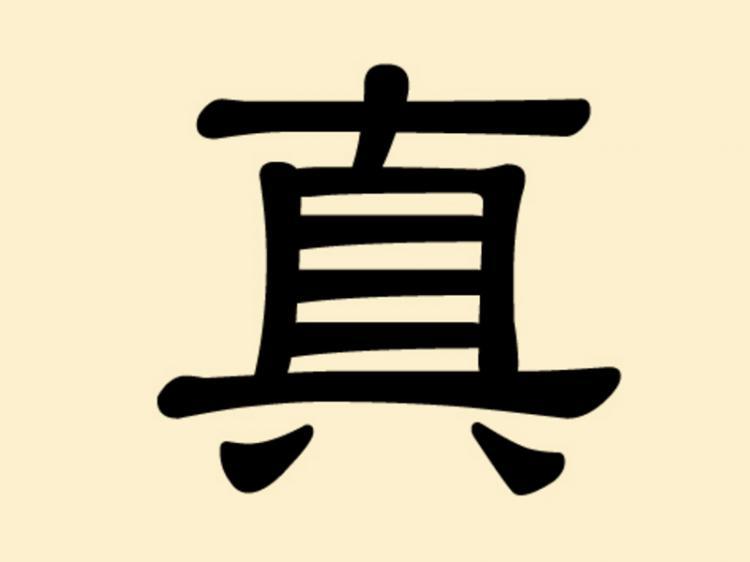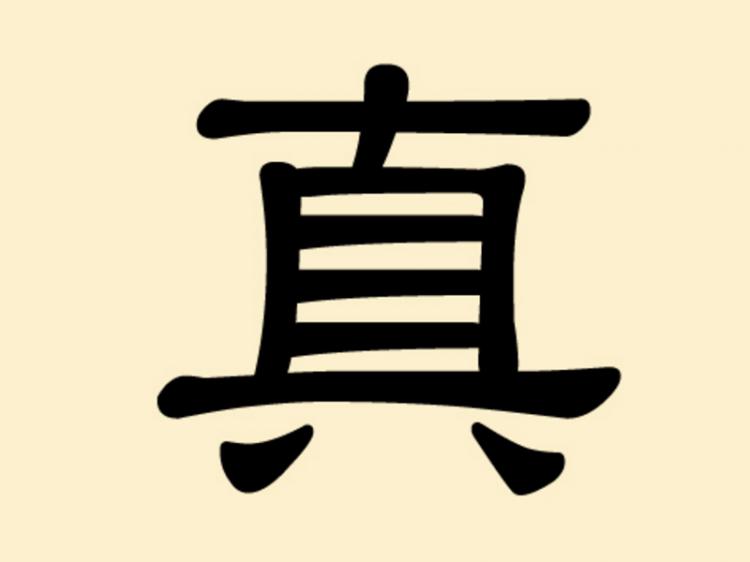The Chinese character 真(zhēn) consists of the two ideograms 十 (shí) and 目 (mù). 十 is the character for the number 10 and symbolizes the 10-directional universe in Buddhist thought, and the perfection of gods, while 目 represents the eye. 十目 therefore corresponds to the heavenly eye, also called the “all-seeing eye.”
This character is derived from the Chinese belief that only supernatural beings, such as deities, have the ability to recognize the truth and reality. It is said that deities are unfettered and not limited by any constraints. In contrast, humans are limited to subjective points of view and restricted to sensory perception originating from the human body.
真plays a central role in the Taoist belief system. In Taoism, man strives to transcend the material world through spiritual practice. In striving toward truthfulness, the Taoist attempts to return to their origin in the universe.
The objective of Taoism is to achieve 真人 (zhēnrén) “true man,” which means a truly complete being. The theory of 真人 states that when one has achieved the truth, one exists in harmony with the universe. This state is synonymous with the Buddhist notion of enlightenment.
The truthful person is free of any notion, concept, perception or limitation, because he/she represents absolute freedom and emptiness, the state that is called Tao.
In contrast to the character 真, the two characters 假 and 偽 represent falsehood or falsification. Both characters show the ideogram 亻 on the left, which is the character for “man” or “humanity.” Lies and falsehood, according to Chinese mythology, originate from the human psyche.







